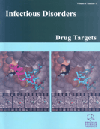
Full text loading...
We use cookies to track usage and preferences.I Understand
Tea is obtained from the young leaves and shoots of the evergreen perennial plant Camellia sinensis (L.) Kuntze, the most popular and frequently consumed product using a natural beverage worldwide. Some kinds of tea products, such as green tea, black tea, and oolong tea, have assorted flavors depending on the manufacturing techniques. Green tea has been studied for many years for its important beneficial effects, including anticancer, anti-obesity, anti-diabetes, anti-inflammatory, neuroprotective, and cardiovascular effects. These effects are primarily associated with tea polyphenols, and regular consumption has been reported to decrease the incidence of some chronic diseases. Current studies support that green tea catechins play an important role in healing and improving the pathology of many diseases. Epigallocatechin-3-gallate (EGCG) is the most a highly found polyphenol in the leaves and is of great interest for its protective role in the prevention of diseases. Therefore, this review presents the efficacy and possible mechanisms of EGCG against sexually transmitted viruses. Moreover, EGCG and its derivatives are recognized as safe bioactive phytochemicals for external and internal use in preventing and treating viral STIs and other concurrent infections. Multidisciplinary studies are essential to discover cheaper, safer, and more effective treatments using EGCG and its derivatives to improve the toxicity and formulations of viral STI medications.

Article metrics loading...

Full text loading...
References


Data & Media loading...

